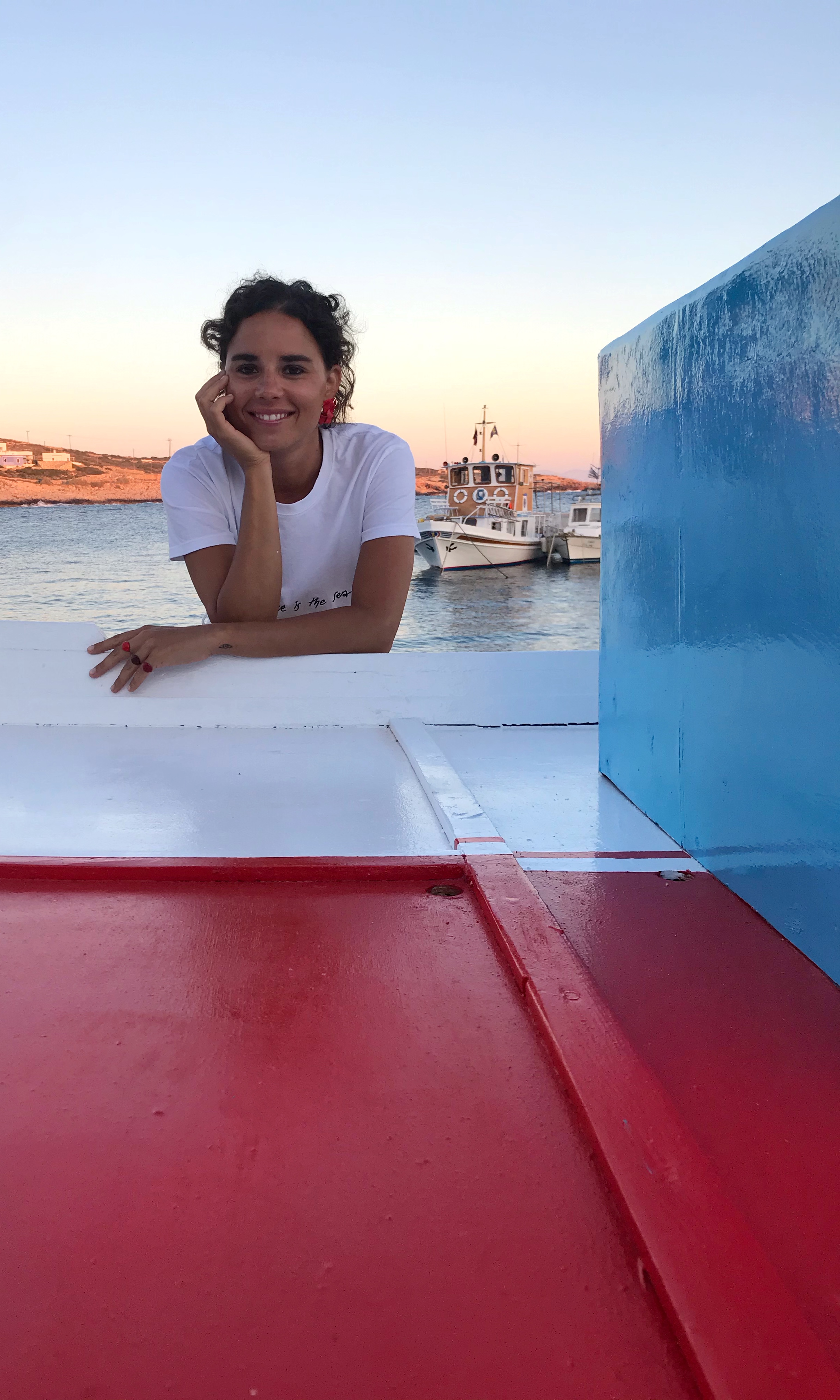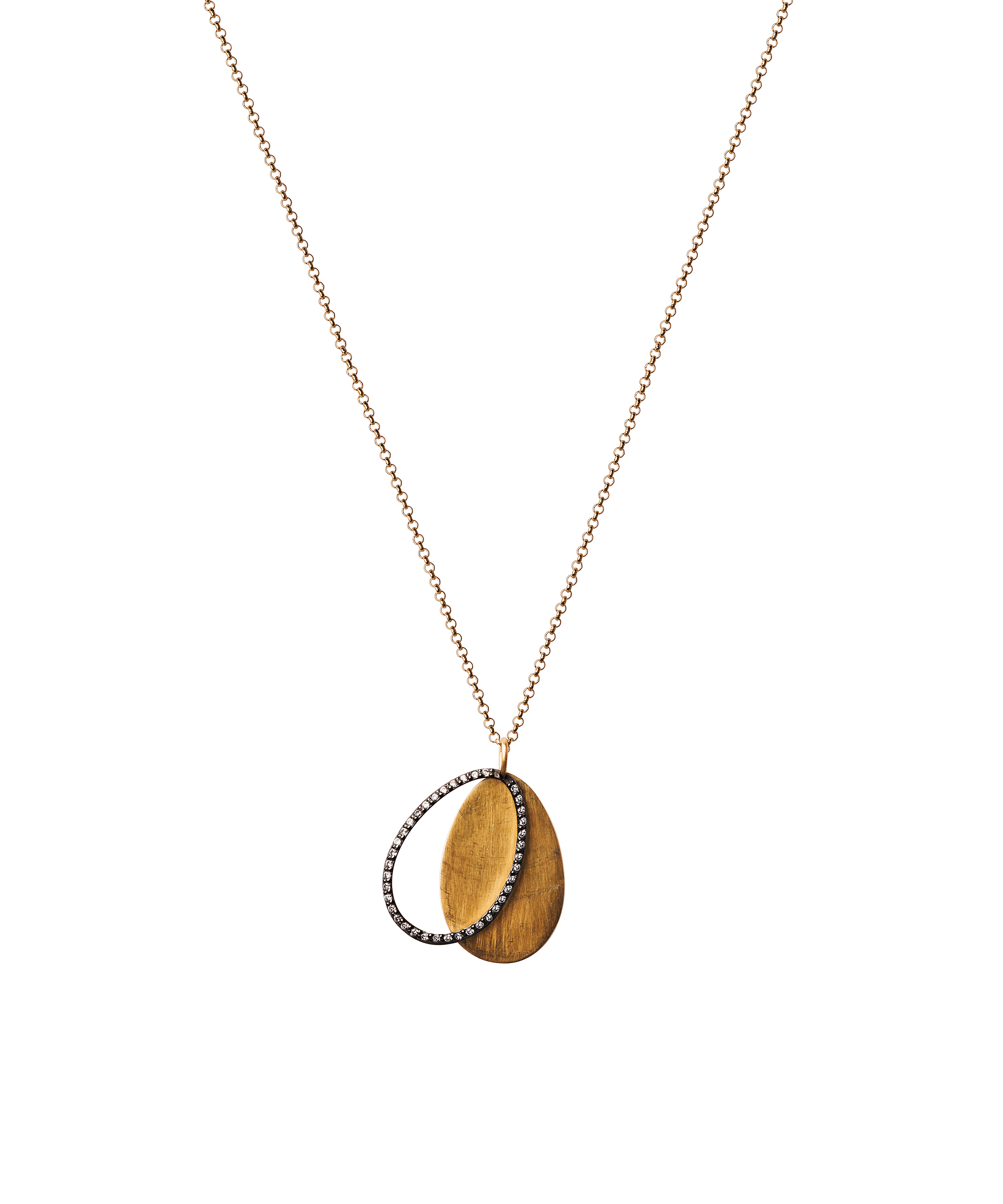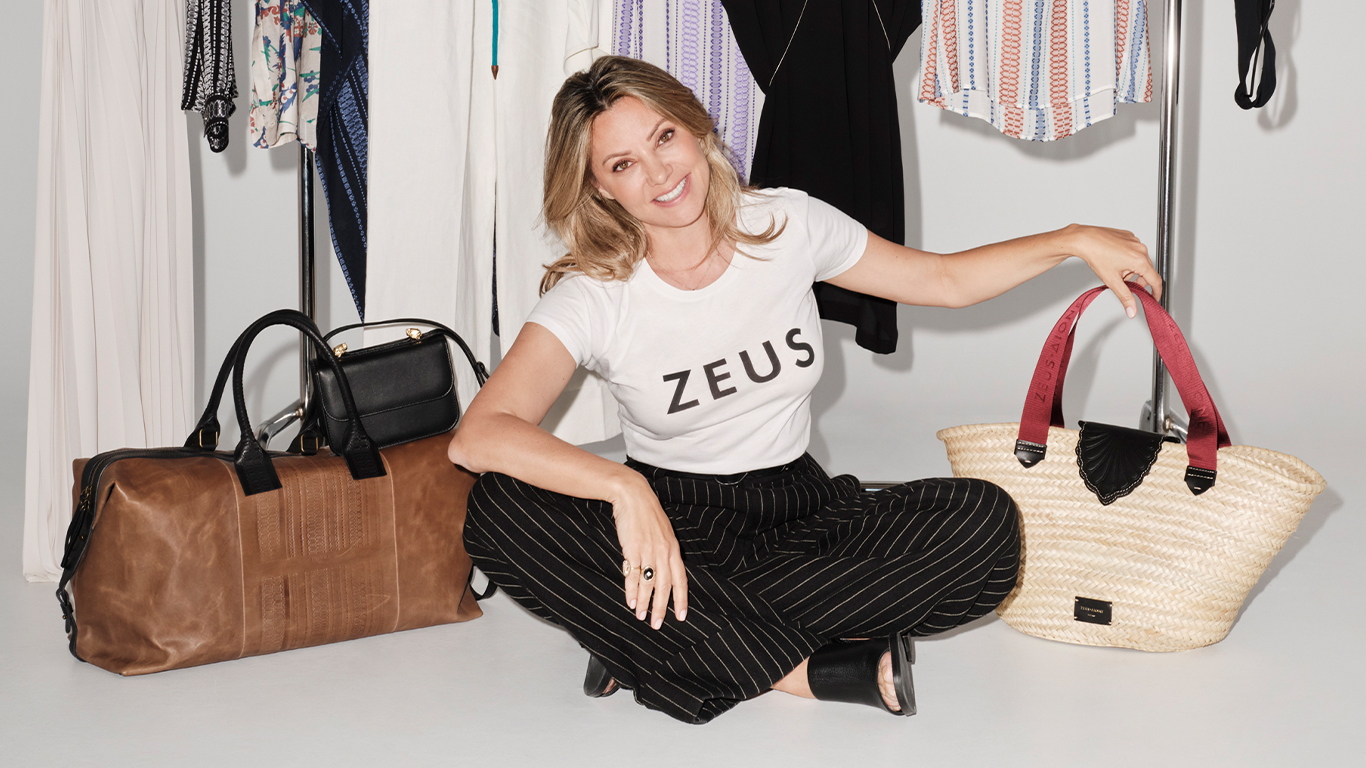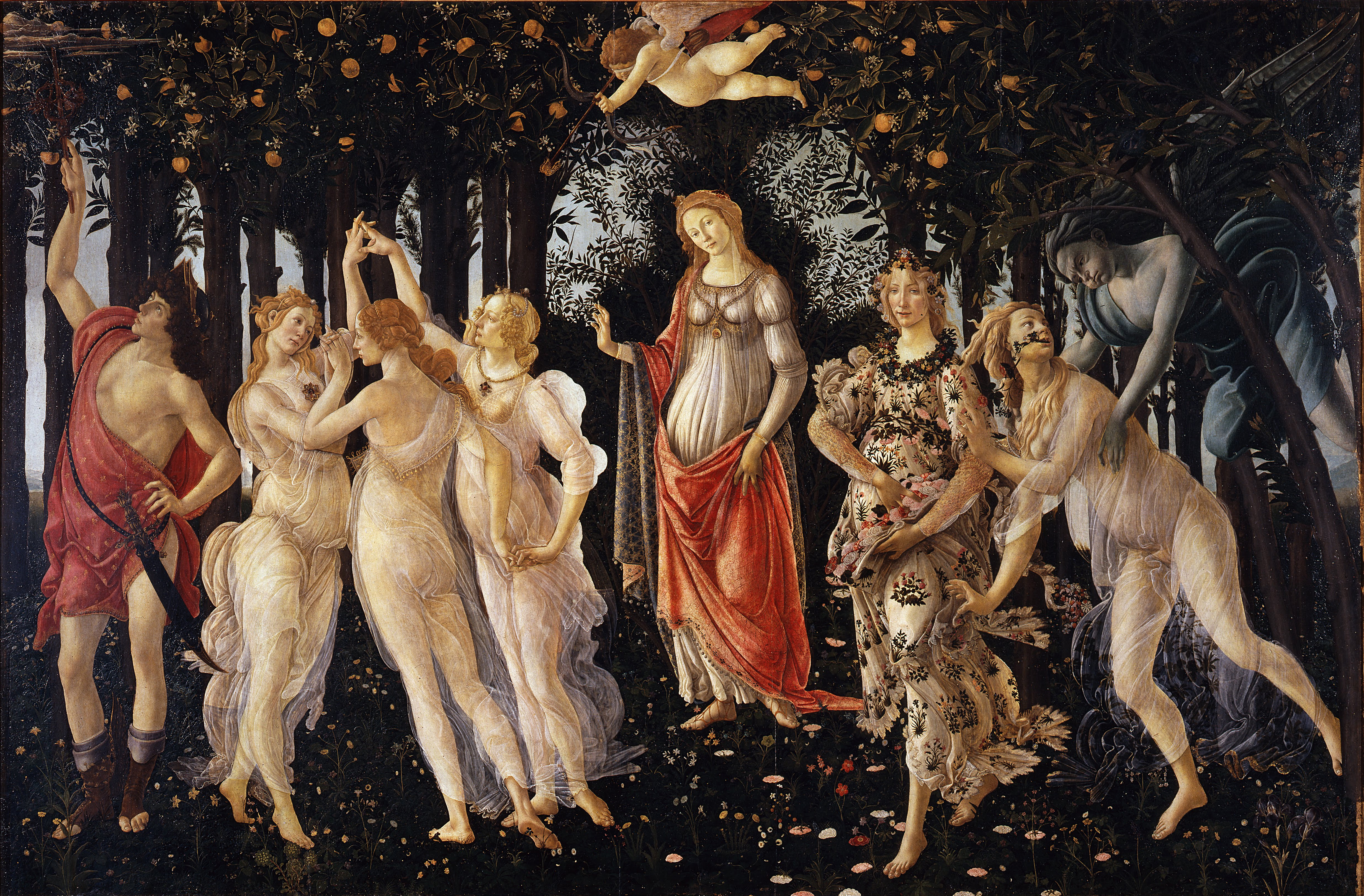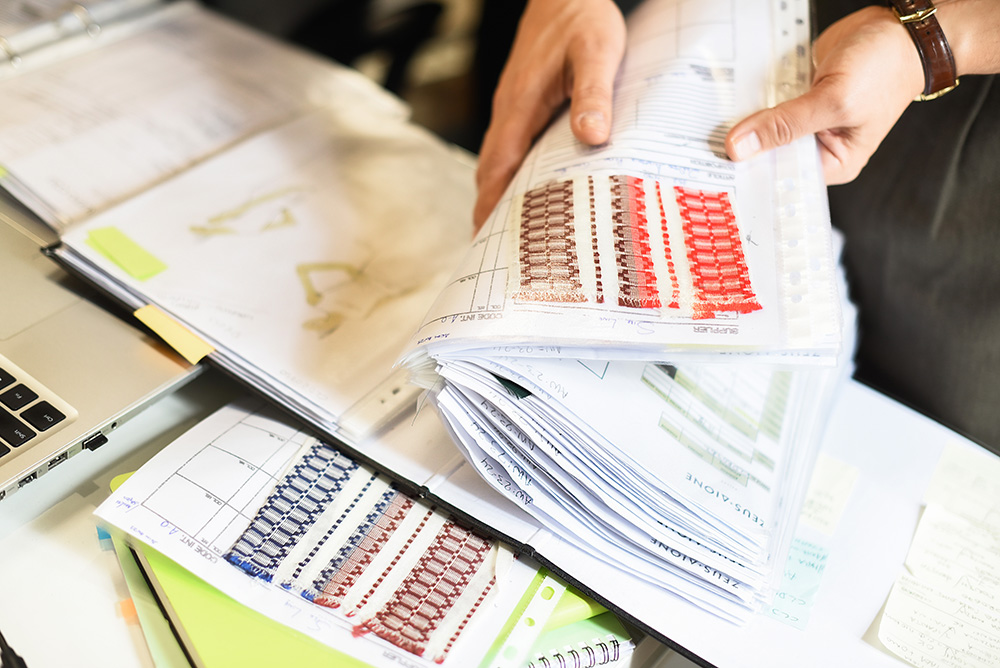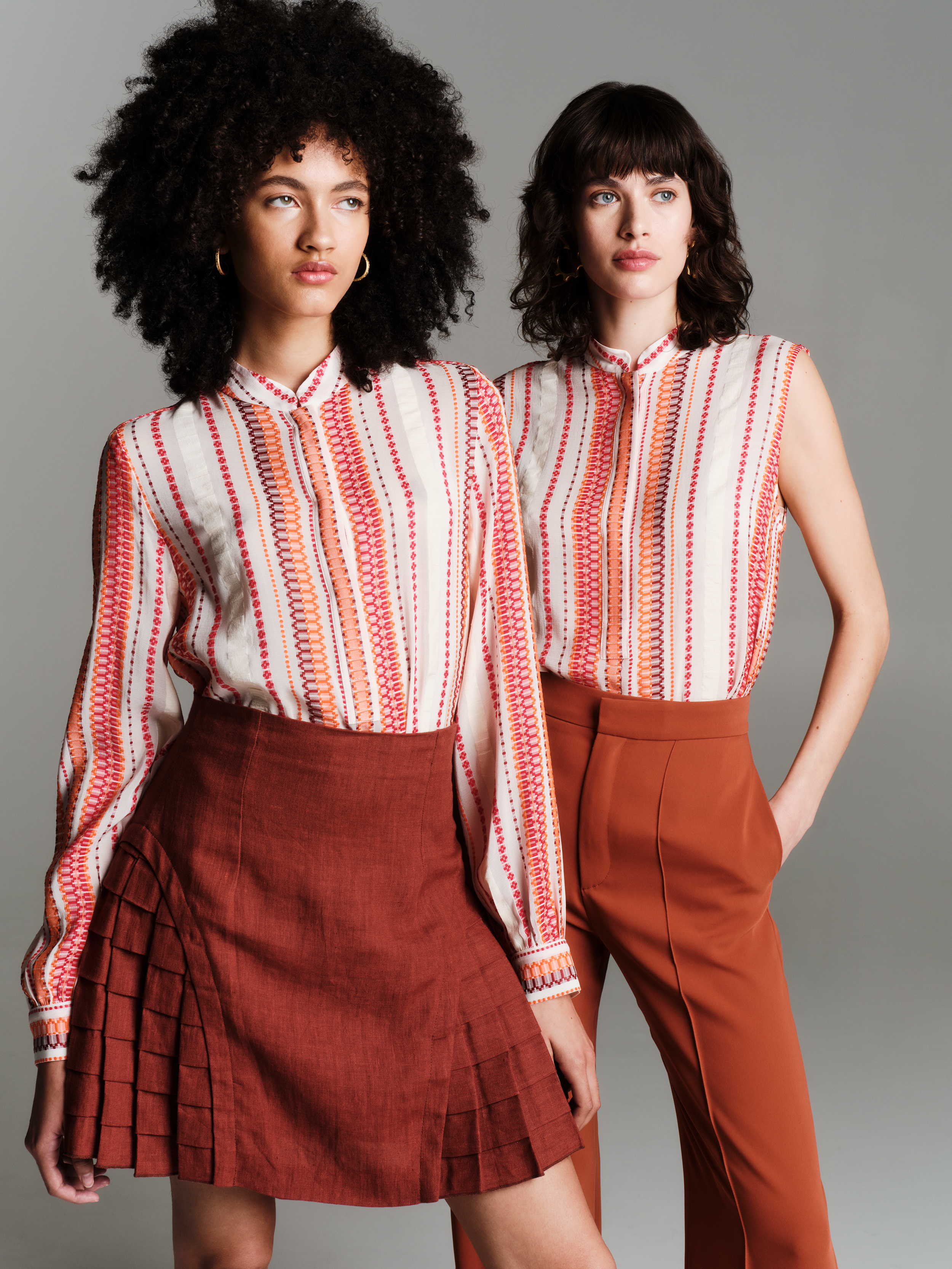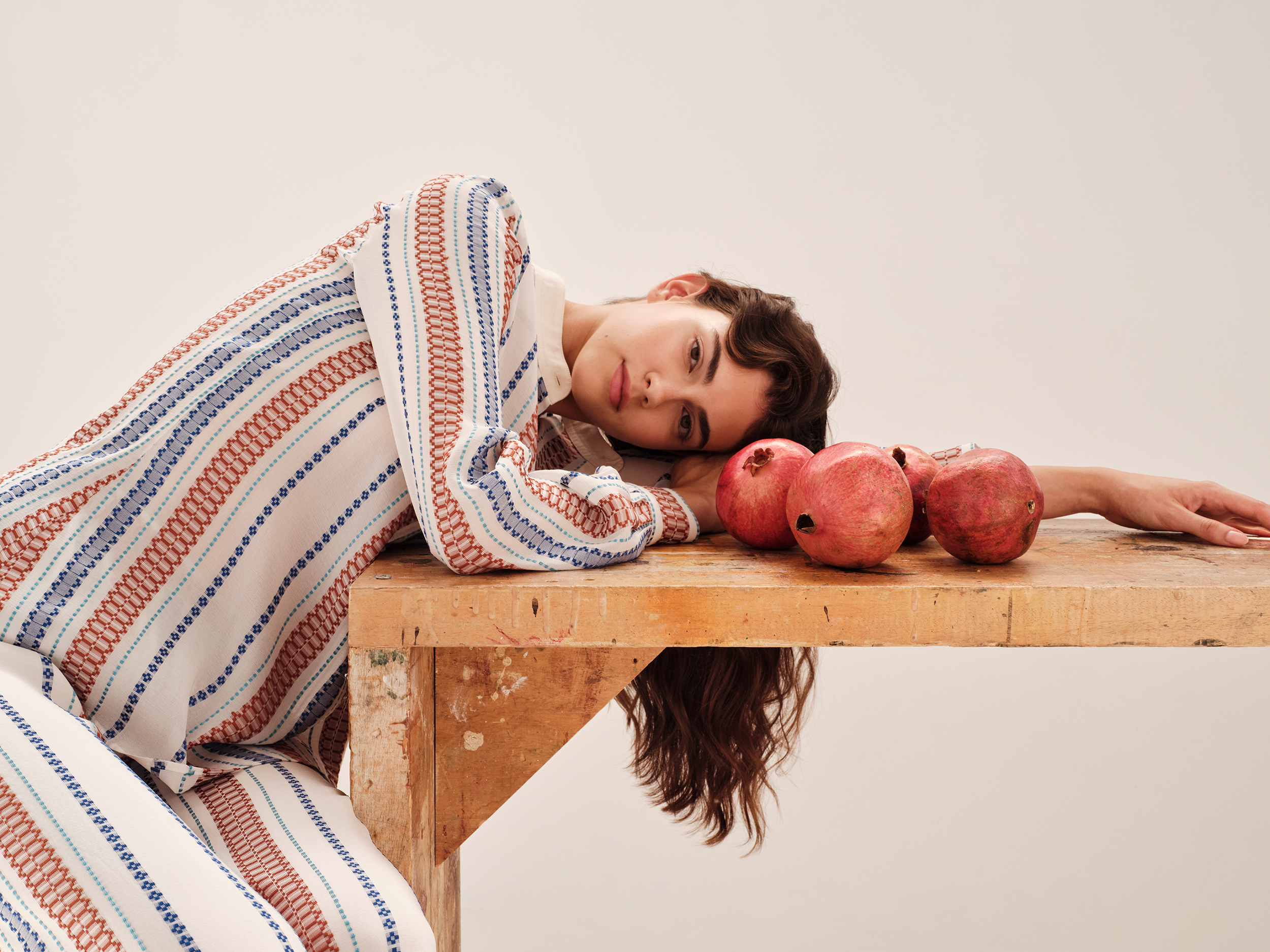Christianna Economou
Greek artist Christianna Economou has two great passions, Greek traditions and the sea, so it’s no surprise that her work encompasses both. What is surprising is her preferred medium: derelict caïques, the quintessential Greek fishing boat, which she meticulously repairs and paints in vivid colours. Having spent her childhood summers on the island of Spetses, Christianna formed a deep and lasting bond with the Aegean while her artistic sensibility brought her to London where she studied sculpture at Central Saint Martins and Chelsea College of Art & Design. It was during this time that her interest in Greece’s folk culture emerged – her thesis focused on the traditional craft of ship carpentry – eventually leading her to move to the small Cycladic island of Schoinousa in 2016 where her signature project, poetically named “Fearless Boats”, was born. Refurbishing derelict caïques is laborious and time-consuming but for Christianna it’s also creative, instructive and rewarding. It’s also a tribute to all the traditional boats that have recently been destroyed – part of the collateral damage in the EU’s drive to reduce overfishing. Several island sojourns and refurbished caïques later, Christianna’s ambitious endeavour is still going strong. Nevertheless, she still finds time for other projects, including organizing art classes for local children and establishing her own t-shirt and hoody brand, “All We See Is The Sea”. We recently caught up with Christianna to ask her about her artistic practice, passion for the sea and life on a small island.
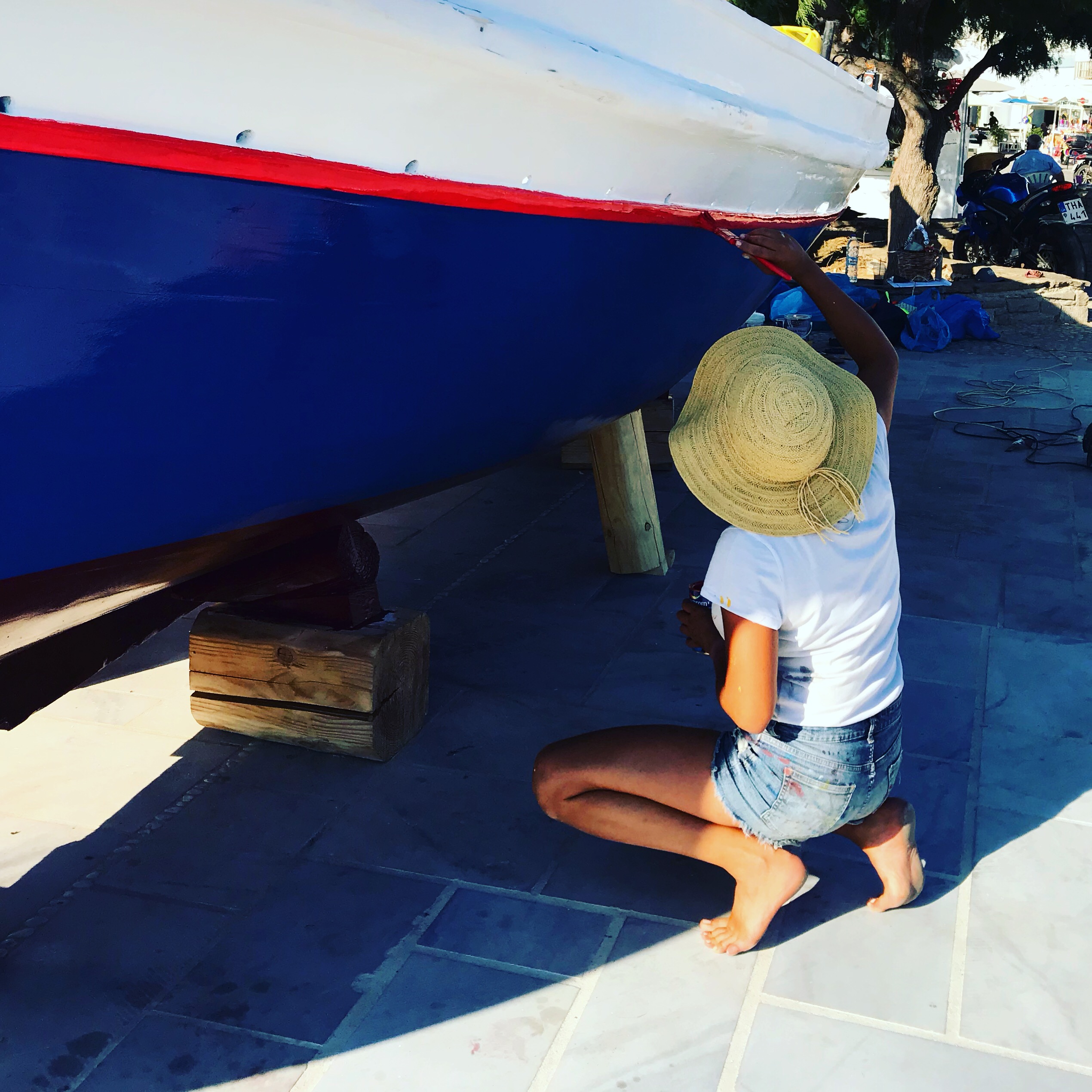
Where does your fascination with the sea stem from?
Honestly, I don’t really know!!! It’s still a mystery for me too. One thing that’s certain is that she (the sea) has always played the role of my healer - inspiration – my very own get away since I was very young, despite the fact that I grew up in Athens. It’s a bond no words can really describe; there are no words that truly describe how I feel about the sea.
How did the idea of artistically renovating traditional caïque boats come about? What is the project’s purpose?
While studying Sculpture at Central Saint Martins in London, my practise was all about Greek traditions that were and are still fading away. My dissertation was based on this, focusing on a landmark chapter in Greece's history and craftsmanship, the caïques. When I returned from London in 2015, I was convinced that this was the path I had to follow which is exactly how the artistic project "Fearless Boats" was born. Through the programme I restore and convert old - abandoned - traditional fishing boats, known as “caïques” into pieces of art. These works of art serve as a tribute to all the Greek caïques that have been destroyed in the past years and pay homage to the Greek shipbuilding tradition as well as to all the seamen and our seas. The project started in the Small Cyclades when I made my first caïque in Schoinousa and then continued in Irakleia, Koufonisi, Paros, Donousa, and Amorgos. This year I’m making one in Spetses.
How laborious and time-consuming is the renovation of a traditional caïque boat?
It depends on how old and damaged the caïque is. You have to be respectful and know what you’re doing. Unfortunately, only a few people know nowadays. It's an ongoing process where you learn something new every day. Firstly, you check the wood and the main body of the boat - the σκαρμοί as we call them in Greek. What follows is a very, very laborious, adventurous and creative process which usually takes 2-4 months of daily work. Of course, this may vary as each boat has different needs. The process and time needed is slightly different when the caïque has to get back to the sea – all of my boats however remain on land so I follow a more basic technique. Whatever the case, the renovation needs devotion, strength and love. Love gives the soul to whatever you do.
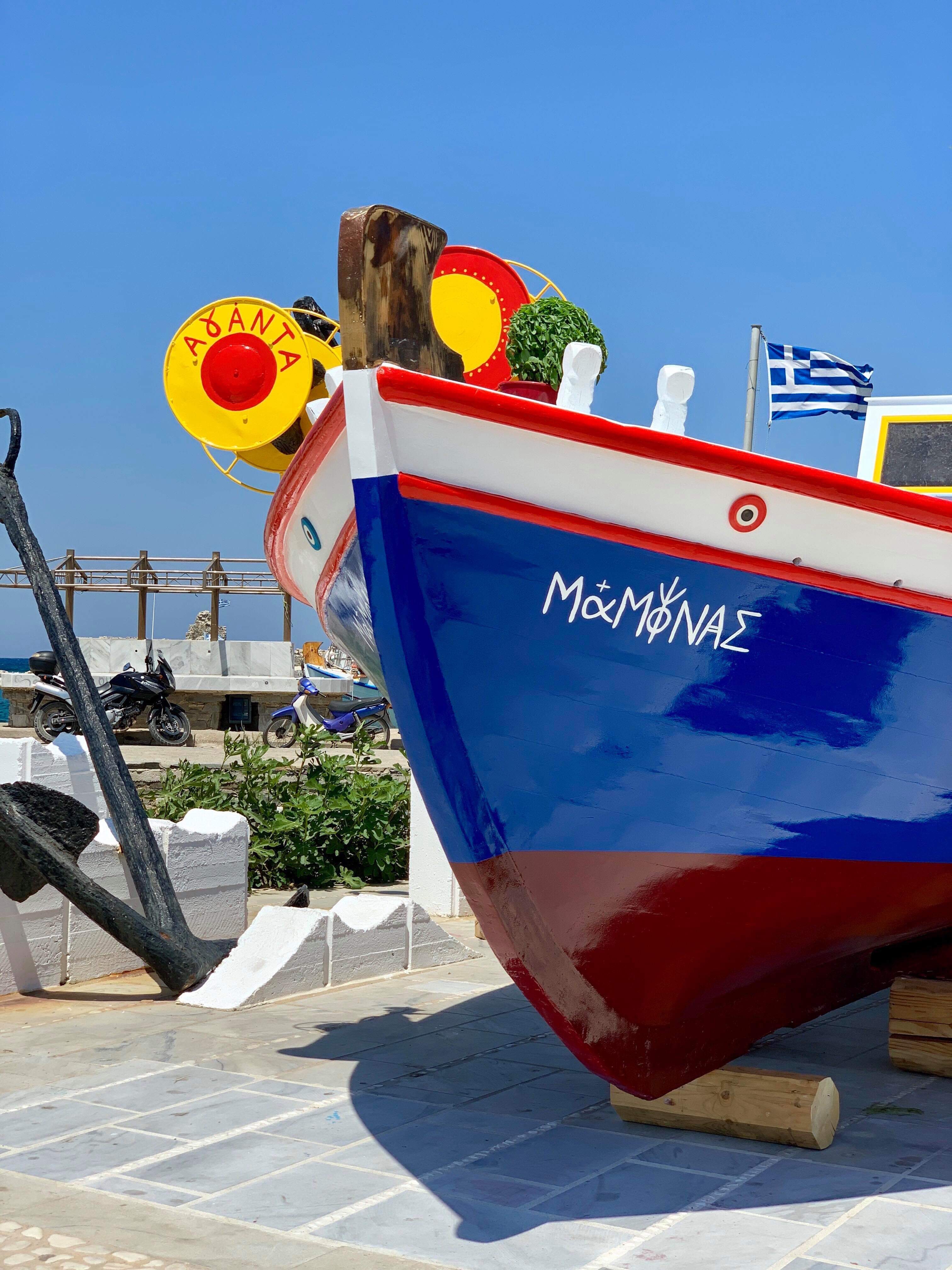
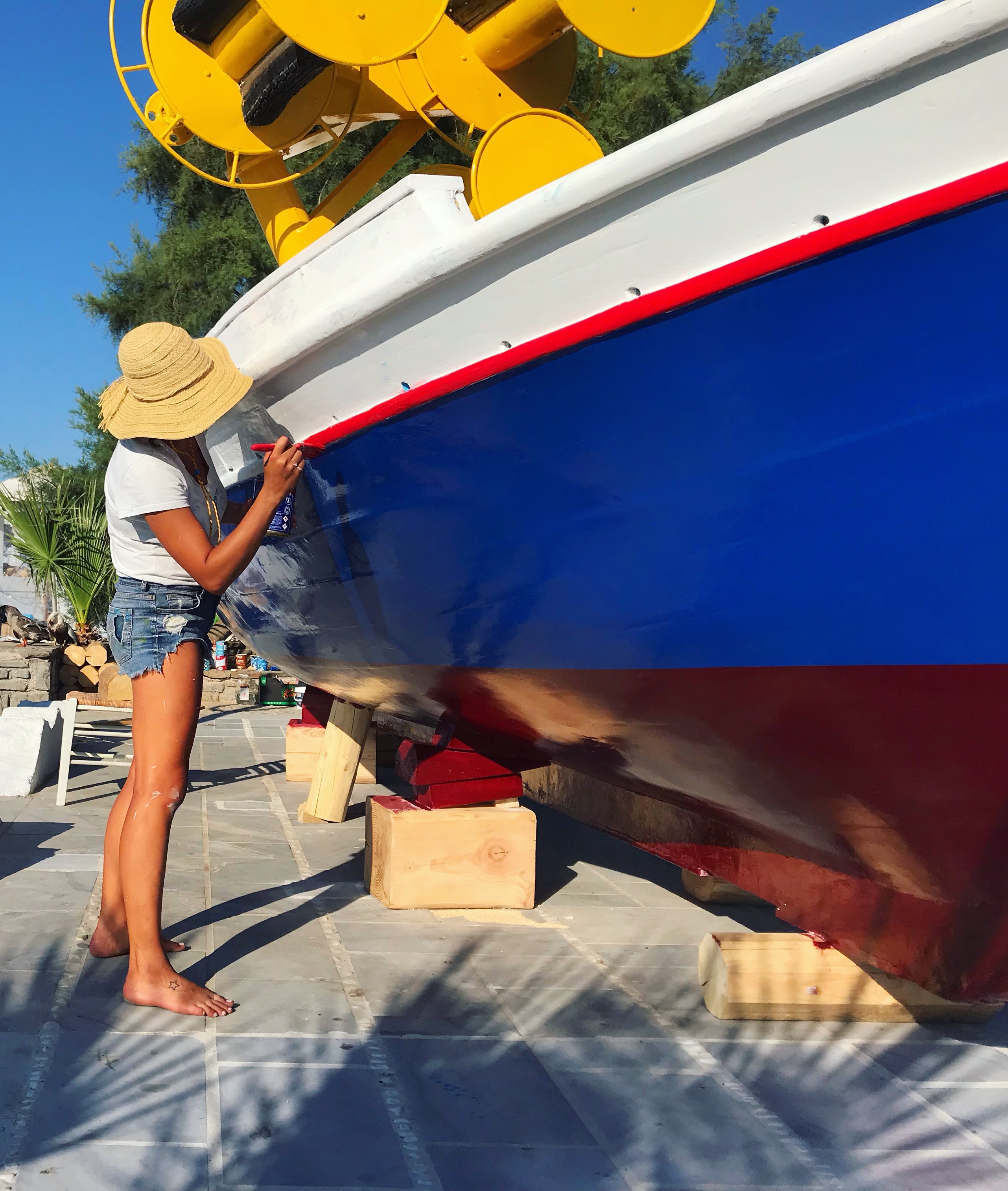
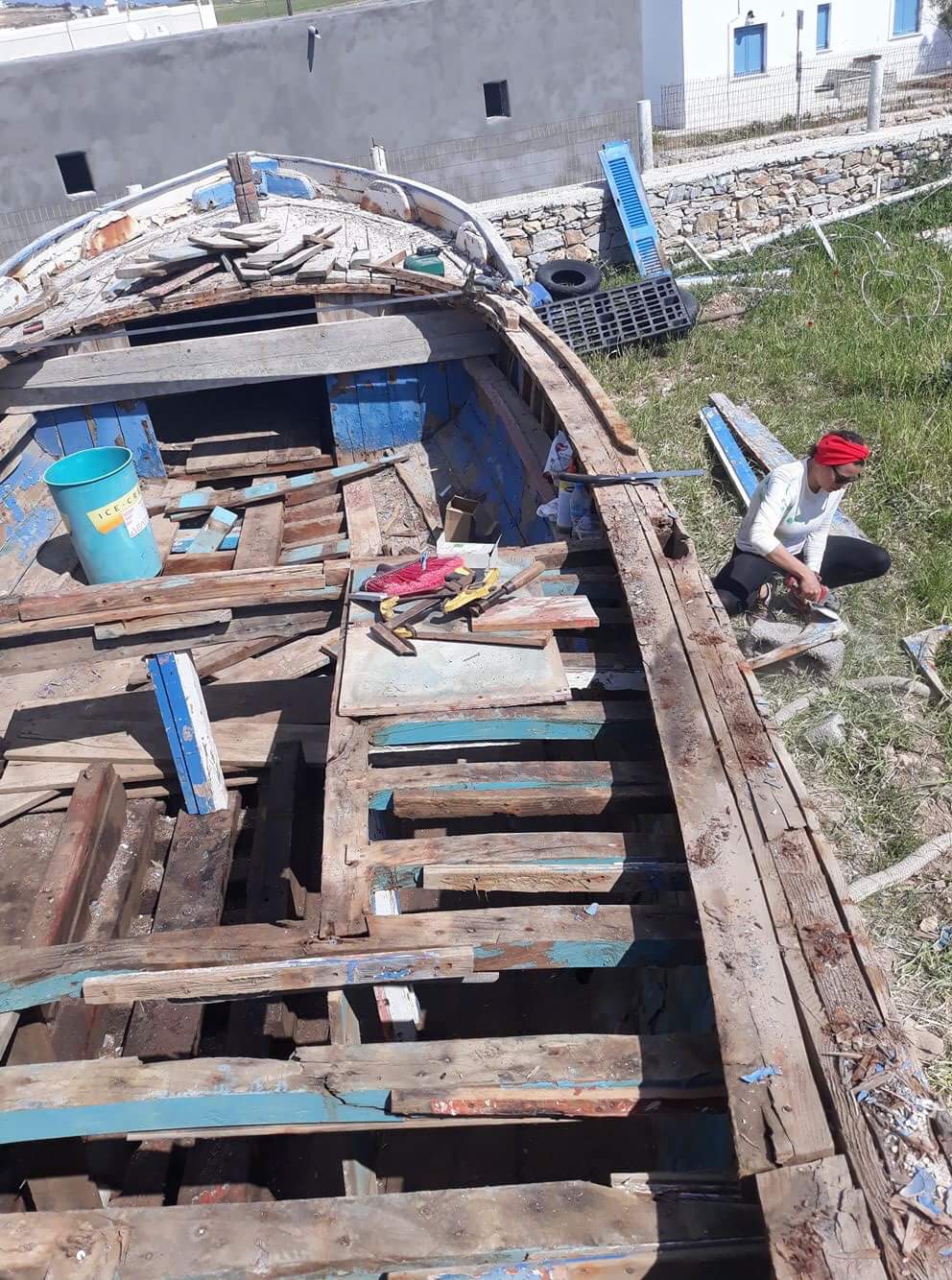
What is the significance of the project’s title “Καράβια Που Δεν Φοβήθηκαν” (Fearless Boats)?
I'd say it's more lyrical and romantic. I like to imagine that these boats are fearless of the passage of time, and the wear and tear of their use. They are the protagonists of my fairytale.
Where do you draw inspiration from?
Since a very young age, I have been fascinated by old and abandoned places and things, and the profound absence they convey, as well as Greece's most traditional techniques. My love deepened during my first year of studies in London as I was researching them, initiating a restless journey with no end in sight. I always love digging into archives with old photos. While living in the Cyclades over the past few years, I have been lucky enough to feel closer to the "core". I am amazed by all the traditions we have as a country and how inspirational they can be for so many disciplines – there are so many artists using these in many different ways.
What role do Greek traditions and folklore play in your practice?
They form the core of my practise and the subject of my research and analysis. They are my daily inspiration.
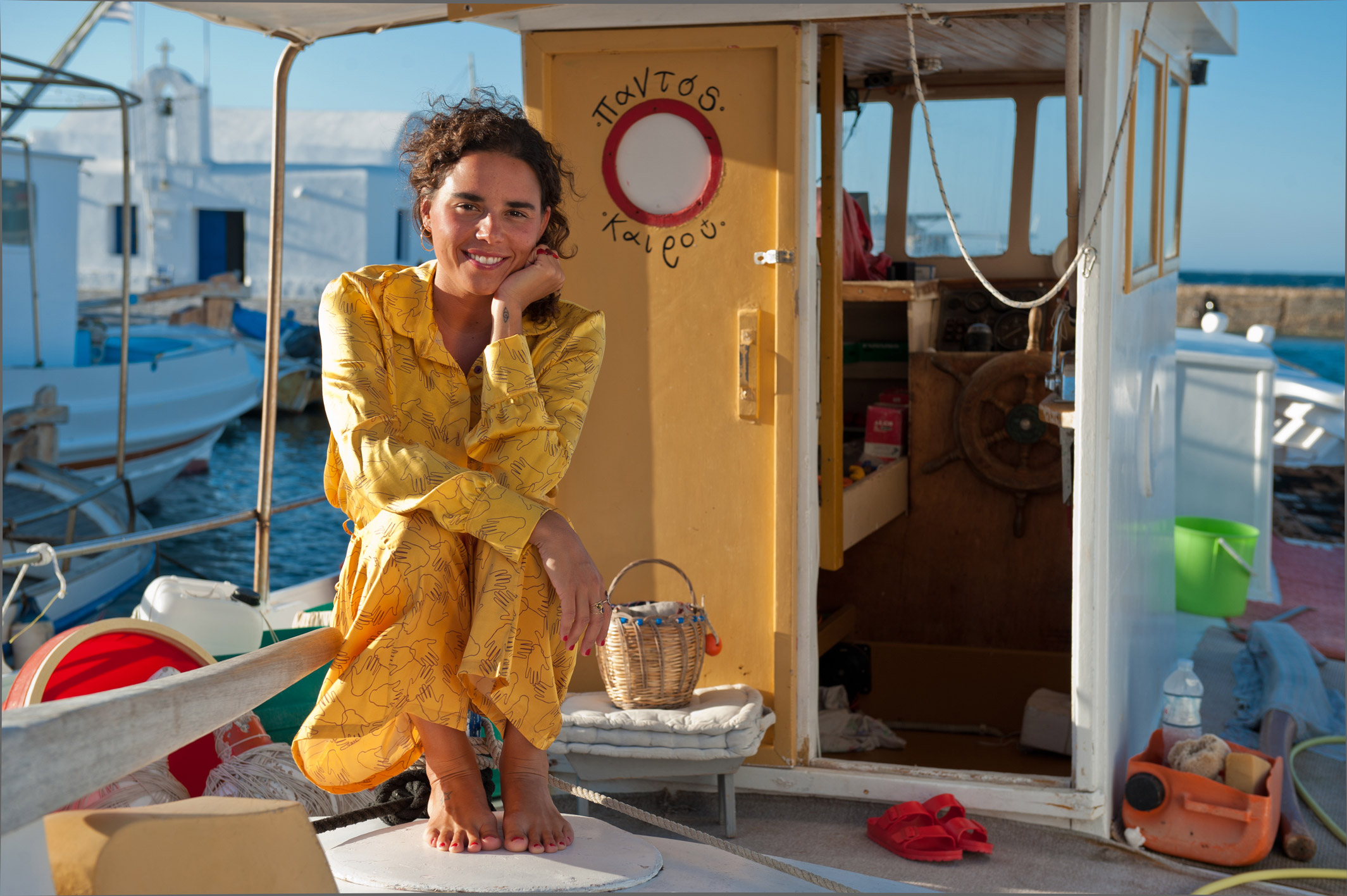
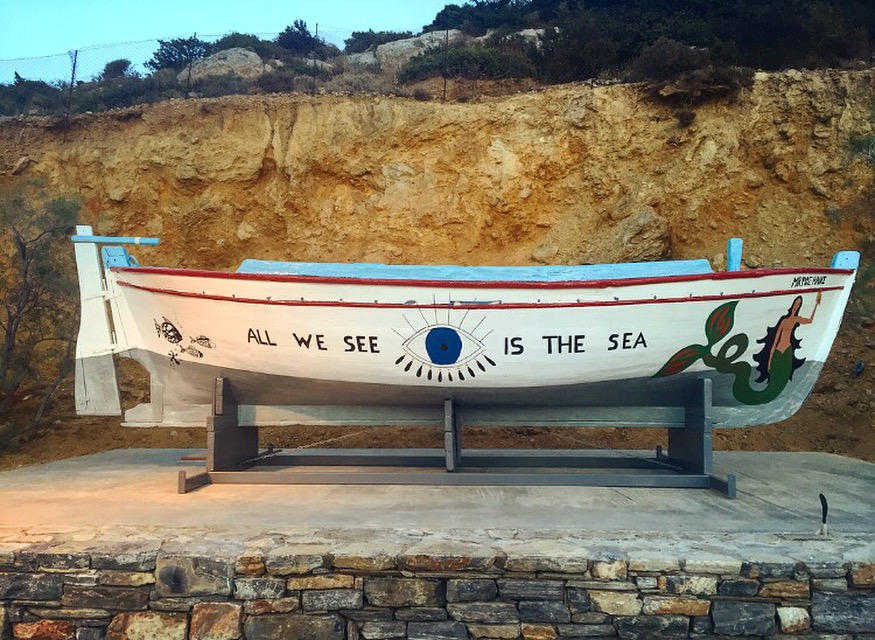
The passage of time and its consequences - decay, loss and memory - loom large in your artistic practice and yet your work conveys conviviality and optimism. Is this juxtaposition intentional?
No, I think it perfectly encapsulates the way I am as a person. Nostalgia, loss, memory, and even death, form the basis of my work, inspiring and motivating me, although you wouldn’t know it from the colourful, positive and fresh sensibility of the finished artworks. Now that I’m describing this in words it sounds weird, but I realise how "me" this is.
Your work is characterized by an exuberant and colourful visual language. How did this aesthetic develop? Is it a reflection of your personality?
Totally. There are two sides of me which emerge every time I make a new piece. Although Greece's treasures play the main role in my work, India is always hidden somewhere there in terms of its vividness and colourful aesthetics. A two-month trip in India six years ago still fuels me today, imbuing my artworks with both nostalgia and positivity.
What is life like in Schoinousa and the other small islands of the Cyclades where you have been living recently? What is the attraction of these places for you as an artist? Do you feel more creative there?
Life on all these small islands is very different in the winter. It’s my favourite season because you get a sense of the true character of each place. I observe, meditate and feel way more creative as I feel closer to my inner self. There are days when you feel that you are at the end of the world, very far away from everything and everyone, especially when you walk along the beach on a really windy day. This sense of freedom makes me feel like I can fly!
What part of island living do you treasure the most?
Waking up really early and enjoying a hot cup of coffee - the vibe of the sea is unique at 7am. There is a raw beauty which calms you down while allowing you to be present and to feel your inner self - it’s a form of meditation which I can’t give up. I am lucky enough to live in a house next to the sea and enjoy this every morning.
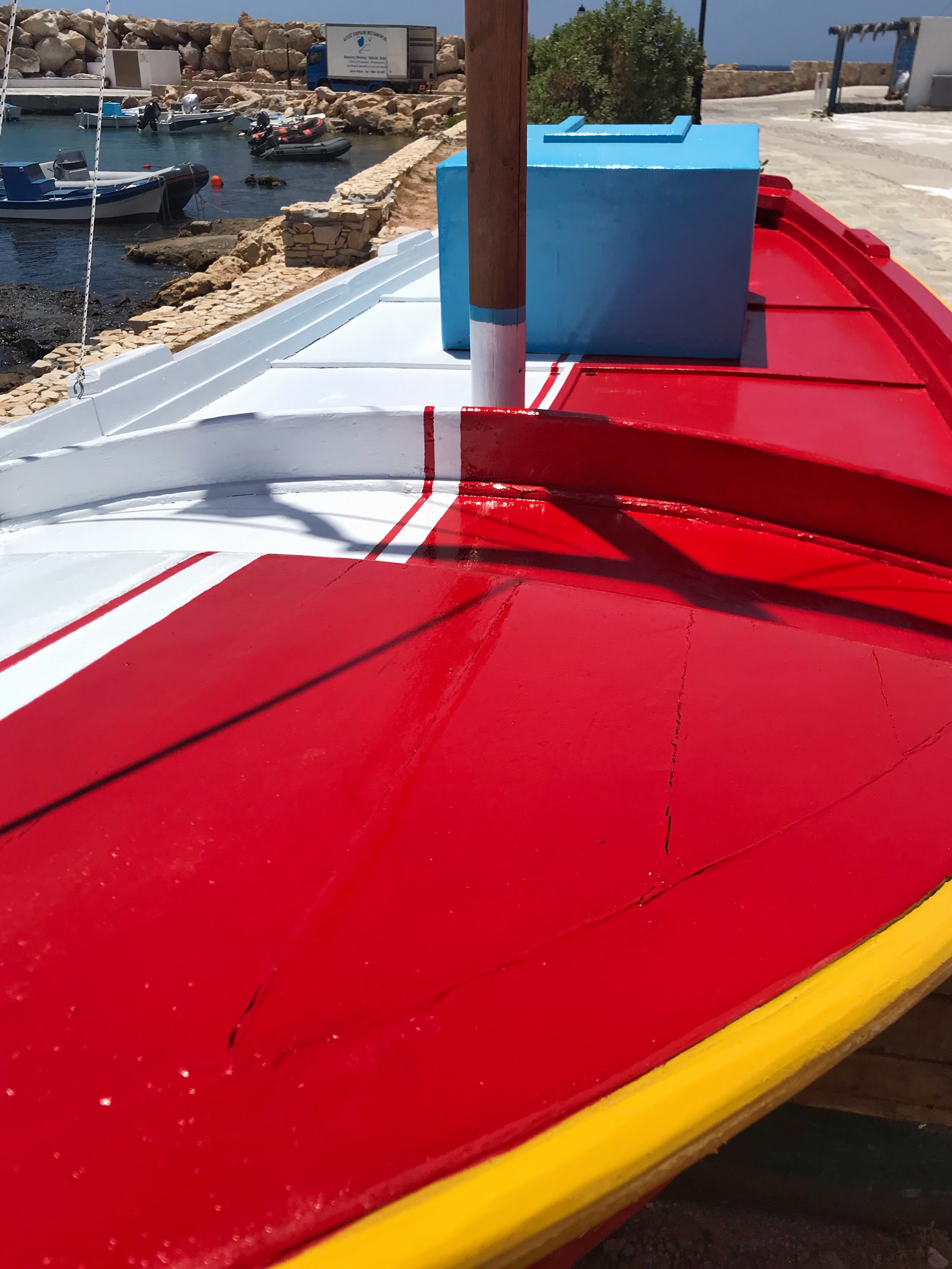
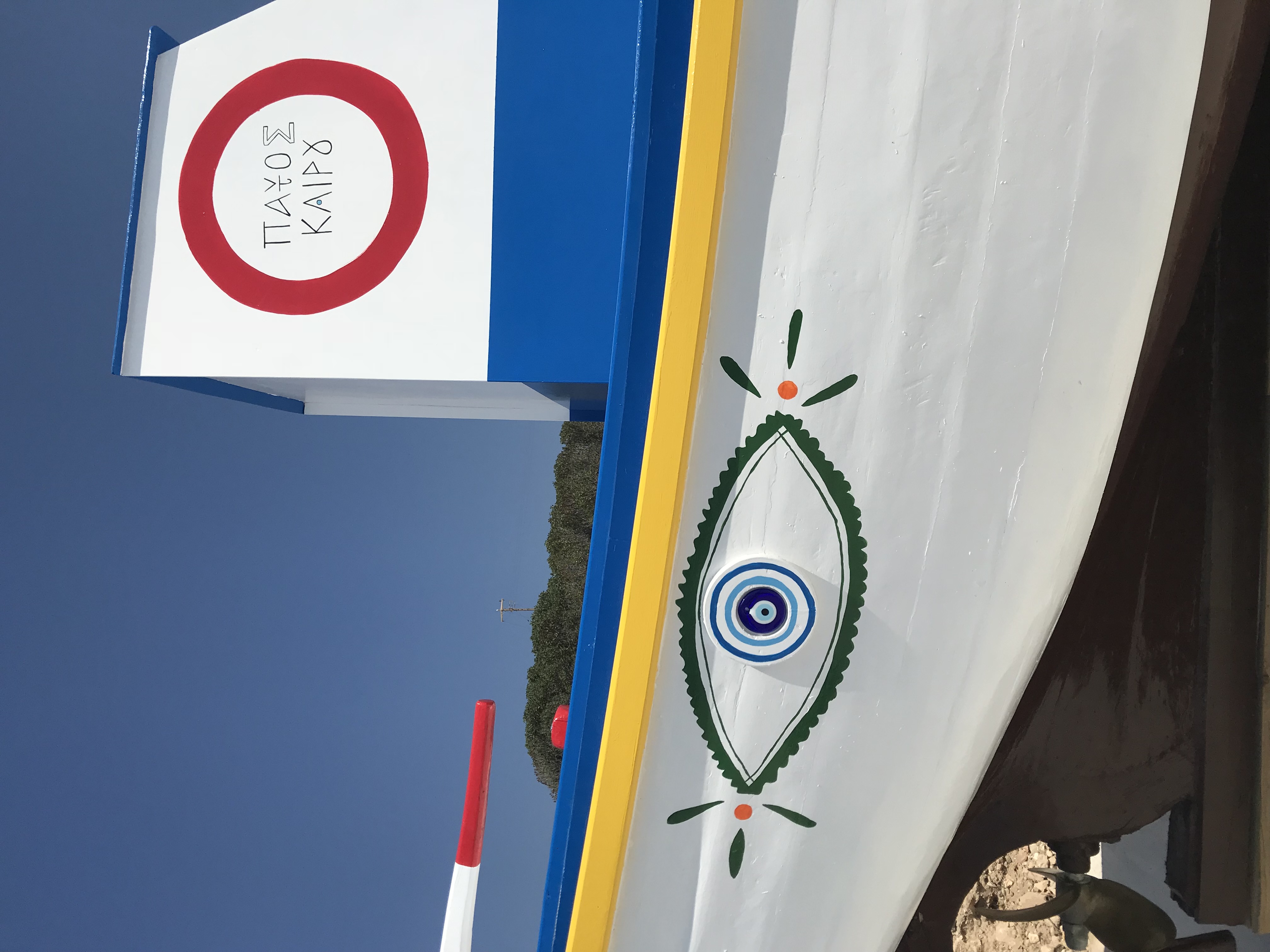

What are you working on right now? Has the 200-year anniversary of the Greek revolutionary war influenced your work in any way?
I am currently setting up my e-shop for a small inspirational brand that I have been working on over the past few years. Its name, "All We See Is The Sea", is also the motto I paint on all my caïques. At the same time, I am preparing a caïque in Spetses for the 200-years anniversary of the Greek revolutionary war which will hopefully be ready this summer.
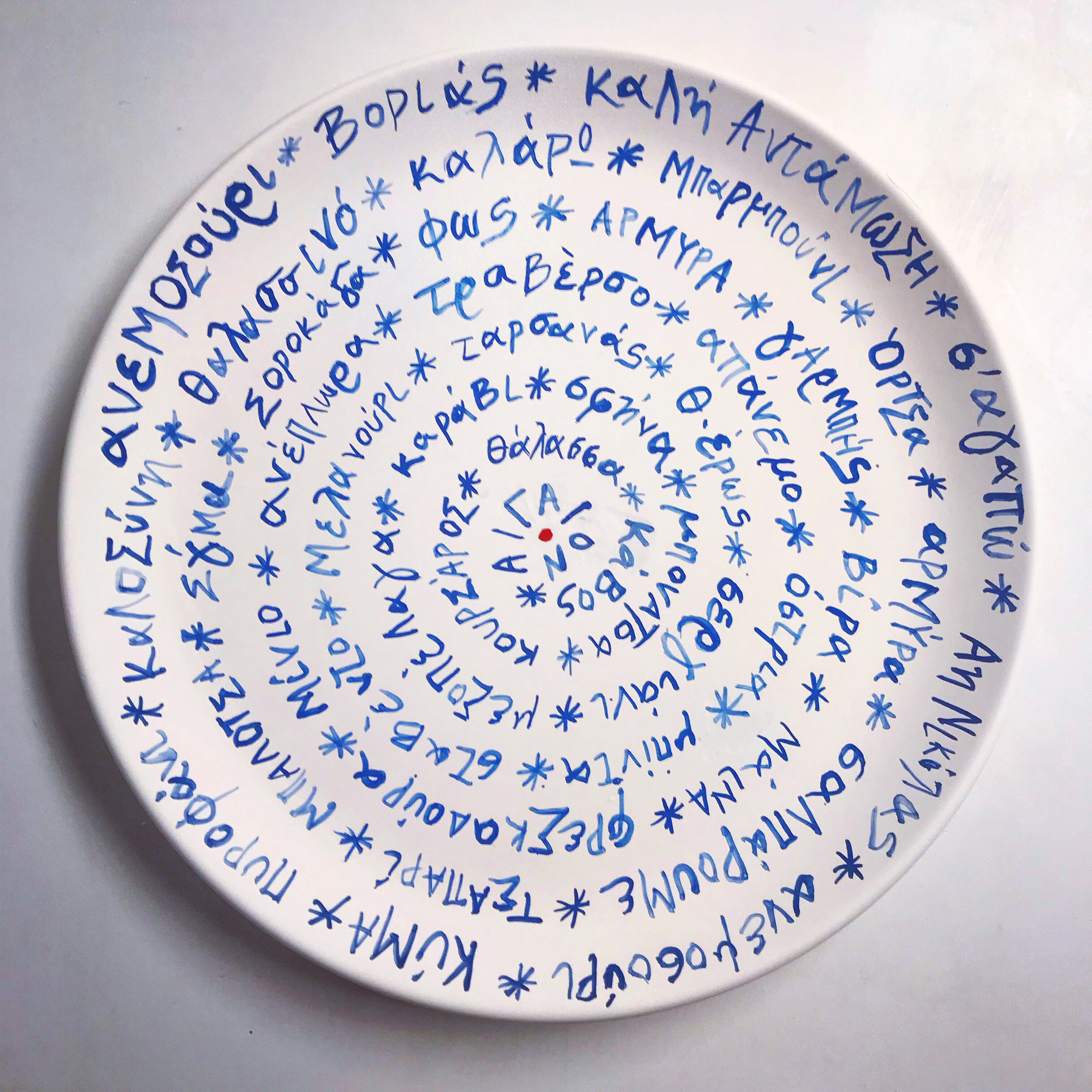
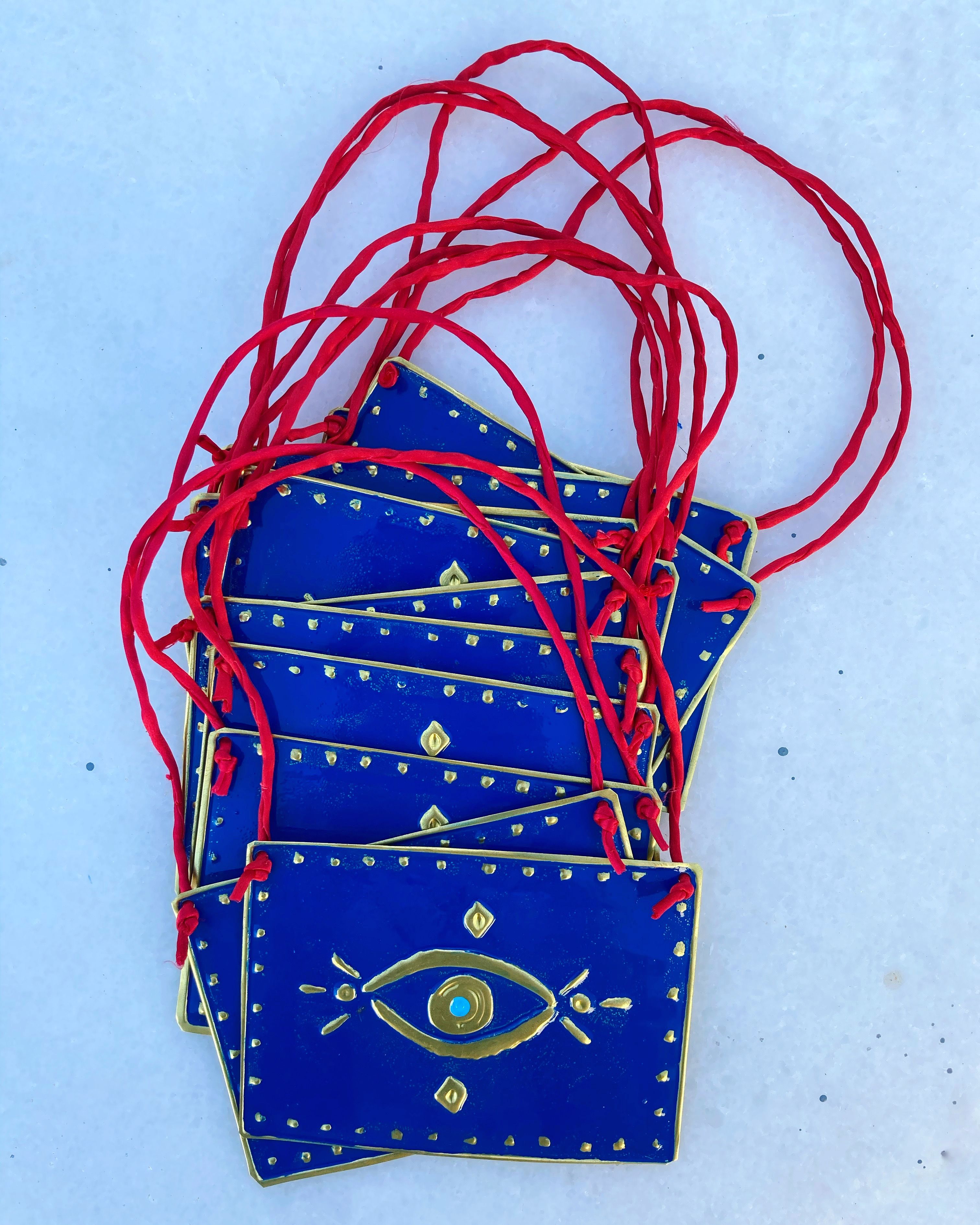
How would you define yourself in three words?
Speedy, Doer, Romantic.
A project/initiative you’re most proud of?
My "Fearless Boats" project.
Where do you draw inspiration from?
Winter on the islands.
Which art/design/style icons are you most inspired by?
Robert Rauschenberg & Vlassis Caniaris.
Which colours are you currently in love with?
Red - now & always.
A timeless design piece you own?
My vintage 1968 Honda Chaly motorbike.
What item in your closet do you wear the most?
My basket bag.
The beauty product you can’t live without?
Lipstick.
Favourite destination and hotel?
India - Aryan Niwas Jaipur.
What’s the most adventurous thing you’ve done in your life?
Travelling to India with only a backpack.
What do you miss most when travelling?
Nothing at all.
Which city would you chose to live in if you had to move?
London - my home away from home.
Favourite gallery/museum?
MoMA PS1.
Who is your favourite hero or heroine in fiction?
Ariel.
What quote do you live by?
As they say in India - "masala" which means "a bit of everything" is the key to a balanced life.
What is your guilty pleasure?
Spending a day alone at home.
Your idea of happiness?
Accepting yourself & others.
